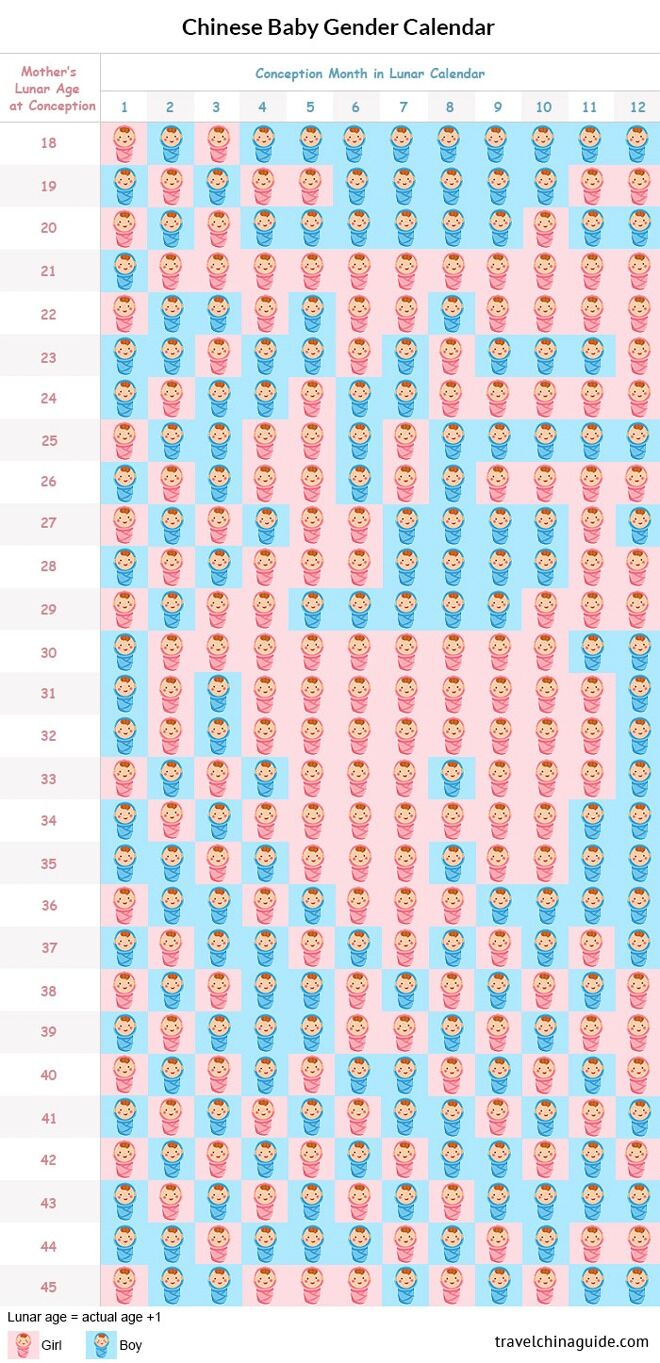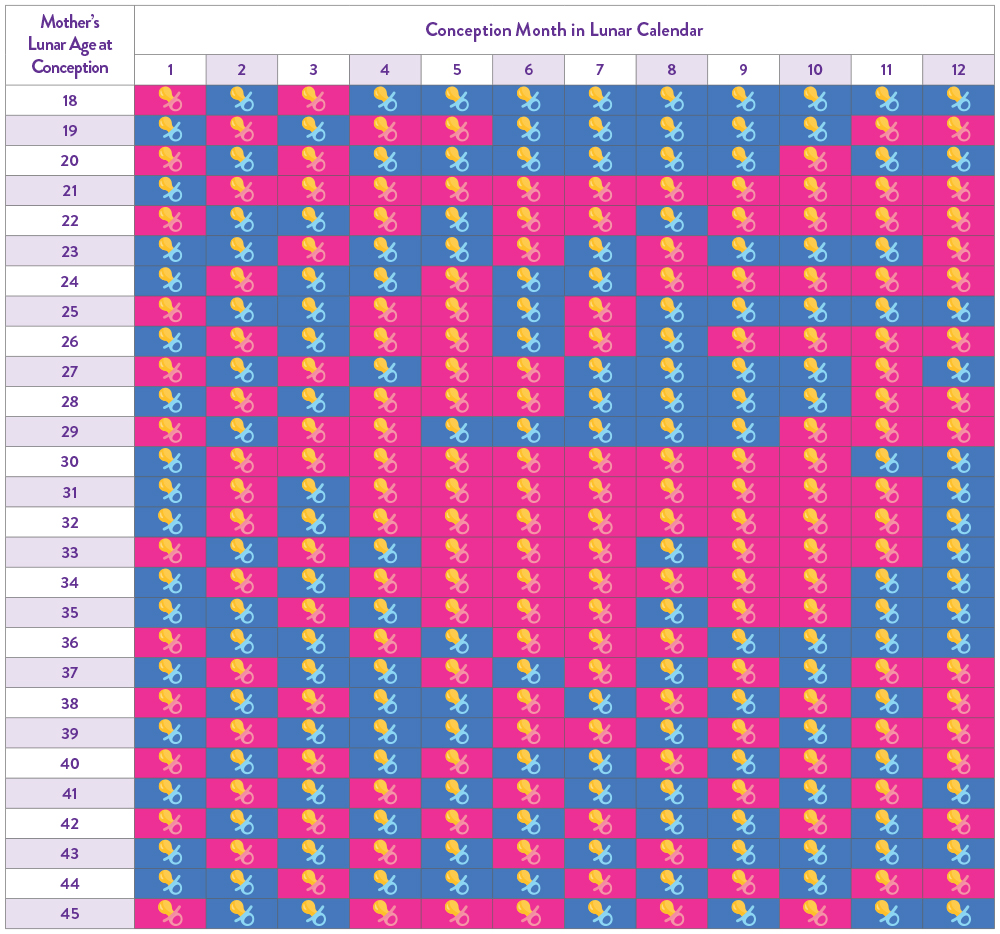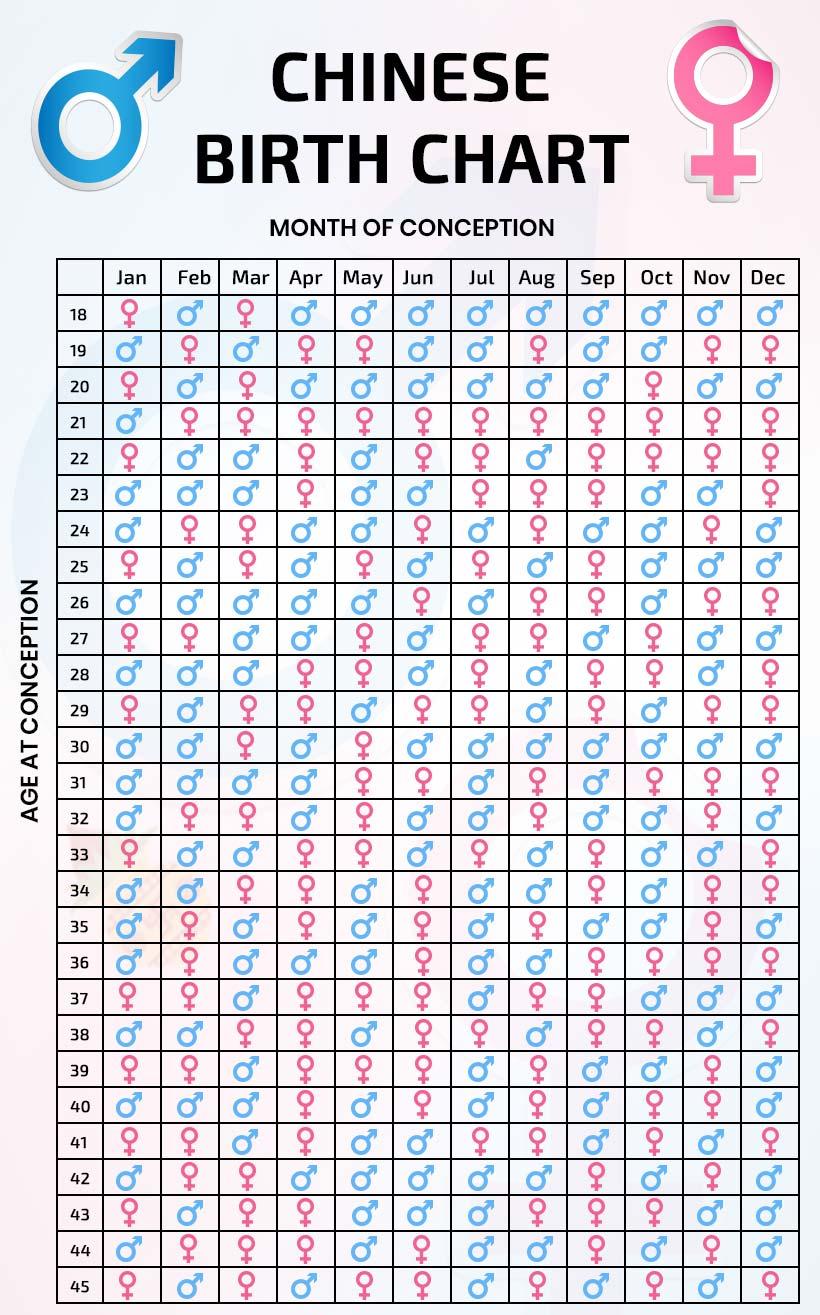The Chinese gender prediction calendar has been a topic of fascination for centuries, promising to predict the gender of a baby based on the mother's lunar age and the month of conception. While modern science provides advanced methods for gender determination, many people still turn to this ancient method for fun or curiosity. But is the Chinese calendar gender prediction accurate? Let's delve into this intriguing topic.
This article will explore the origins, methods, and accuracy of the Chinese gender prediction calendar. Whether you're a curious parent-to-be or simply interested in cultural traditions, this guide will provide you with valuable insights backed by research and expert opinions.
By the end of this article, you'll have a clearer understanding of how the Chinese gender prediction calendar works and whether it holds any scientific validity. Let's dive in!
Read also:Boost Your Online Presence The Ultimate Guide To Website Pros In Spokane Wa
Table of Contents
- The Origin of the Chinese Gender Prediction Calendar
- How the Chinese Gender Prediction Calendar Works
- Is the Chinese Calendar Gender Prediction Accurate?
- The Science Behind Gender Prediction
- Cultural Significance of the Chinese Gender Calendar
- Comparison with Modern Methods
- Common Questions About the Chinese Gender Calendar
- Benefits of Using the Chinese Gender Calendar
- Limitations of the Chinese Gender Calendar
- Conclusion: Should You Trust the Chinese Gender Calendar?
The Origin of the Chinese Gender Prediction Calendar
The Chinese gender prediction calendar, also known as the Chinese birth chart or baby gender chart, dates back over 700 years. It is believed to have originated during the Qing Dynasty, although some sources suggest it may have been used even earlier. According to legend, the chart was discovered in a royal tomb near Beijing and has since been passed down through generations.
Historically, the calendar was used to predict the gender of unborn children based on traditional Chinese beliefs about astrology and lunar cycles. While its origins are steeped in mythology, the calendar remains a popular cultural tool today, particularly in Asian communities.
In modern times, the Chinese gender prediction calendar has gained global attention, with many people using it as a fun way to guess the gender of their baby. Despite its lack of scientific backing, the calendar continues to intrigue and entertain.
How the Chinese Gender Prediction Calendar Works
Understanding the Chart
The Chinese gender prediction calendar is based on two key factors: the mother's lunar age at the time of conception and the month of conception. The chart is divided into rows and columns, with the rows representing the mother's age and the columns representing the conception months.
To use the chart, follow these steps:
- Calculate the mother's lunar age at the time of conception.
- Determine the month of conception.
- Locate the intersection of the mother's age and the conception month on the chart.
- The result will indicate the predicted gender of the baby.
Key Considerations
It's important to note that the Chinese gender prediction calendar uses the lunar calendar, which differs from the Gregorian calendar commonly used today. This means that the mother's lunar age may differ from her actual age. Additionally, the chart assumes that conception occurred during the specified month, which may not always align with the actual date of conception.
Read also:United Airlines Purchase Wifi A Comprehensive Guide To Staying Connected In The Sky
Is the Chinese Calendar Gender Prediction Accurate?
One of the most common questions about the Chinese gender prediction calendar is whether it is accurate. While some people claim to have had success with the chart, scientific studies suggest that its accuracy is no better than chance.
A study published in the Journal of Obstetrics and Gynecology found that the Chinese gender prediction calendar correctly predicted the gender of unborn babies in only 50% of cases. This is consistent with the results of other studies, which indicate that the chart is essentially a 50/50 guess.
Despite its lack of scientific accuracy, many people still enjoy using the Chinese gender prediction calendar as a fun and lighthearted way to engage with the pregnancy experience.
The Science Behind Gender Prediction
Modern Methods of Gender Determination
In contrast to the Chinese gender prediction calendar, modern science offers several reliable methods for determining the gender of a baby. These include:
- Ultrasound: Typically performed between 18 and 22 weeks of pregnancy, an ultrasound can accurately determine the baby's gender in most cases.
- Non-Invasive Prenatal Testing (NIPT): This blood test can detect the baby's gender as early as 10 weeks into the pregnancy.
- Amniocentesis: Although primarily used to detect genetic disorders, this test can also reveal the baby's gender.
Why Science Matters
While the Chinese gender prediction calendar may be entertaining, it is not a substitute for scientifically validated methods of gender determination. Modern techniques provide accurate and reliable results, which are crucial for making informed decisions about pregnancy and childbirth.
Cultural Significance of the Chinese Gender Calendar
Beyond its use as a gender prediction tool, the Chinese gender prediction calendar holds significant cultural value. In many Asian cultures, the birth of a child is considered a momentous occasion, and the calendar serves as a way to connect with traditional practices and beliefs.
For some families, the calendar is a source of hope and excitement, offering a glimpse into the future of their unborn child. While its accuracy may be questionable, its cultural significance cannot be overlooked.
Comparison with Modern Methods
Pros and Cons
When comparing the Chinese gender prediction calendar with modern methods, it's important to consider the pros and cons of each approach:
- Chinese Gender Prediction Calendar: Fun and easy to use, but lacks scientific accuracy.
- Ultrasound: Accurate and widely available, but requires a visit to the doctor.
- NIPT: Highly accurate and can be performed early in pregnancy, but may be costly.
Choosing the Right Method
Ultimately, the choice of gender prediction method depends on individual preferences and needs. For those seeking a fun and cultural experience, the Chinese gender prediction calendar may be an appealing option. However, for those who require accurate and reliable results, modern scientific methods are the best choice.
Common Questions About the Chinese Gender Calendar
How Accurate Is the Chinese Gender Calendar?
As mentioned earlier, the Chinese gender prediction calendar is accurate approximately 50% of the time, which is equivalent to a random guess.
Can the Chinese Gender Calendar Predict Twins?
The Chinese gender prediction calendar is not designed to predict twins or multiple births. It is primarily focused on predicting the gender of a single baby.
Is the Chinese Gender Calendar Still Used Today?
Yes, the Chinese gender prediction calendar remains popular, particularly in Asian communities. It is often used as a fun and cultural way to engage with the pregnancy experience.
Benefits of Using the Chinese Gender Calendar
Entertainment Value
One of the primary benefits of the Chinese gender prediction calendar is its entertainment value. Many people enjoy using the chart as a fun way to guess the gender of their baby or to engage in friendly discussions with friends and family.
Cultural Connection
For those with ties to Asian cultures, the Chinese gender prediction calendar offers a way to connect with traditional practices and beliefs. It can be a meaningful way to honor one's heritage while celebrating the arrival of a new family member.
Limitations of the Chinese Gender Calendar
While the Chinese gender prediction calendar has its merits, it also has several limitations:
- Lack of scientific accuracy.
- Reliance on lunar age and conception month, which may not always align with actual dates.
- Not suitable for making critical decisions about pregnancy or childbirth.
It's important to approach the Chinese gender prediction calendar with an open mind and a sense of curiosity, rather than relying on it for definitive answers.
Conclusion: Should You Trust the Chinese Gender Calendar?
In conclusion, the Chinese gender prediction calendar is a fascinating cultural tool that has captivated people for centuries. While it lacks scientific accuracy, it offers entertainment value and a connection to traditional practices. For those seeking accurate and reliable results, modern scientific methods are the best choice.
We encourage you to share your thoughts and experiences with the Chinese gender prediction calendar in the comments below. Additionally, feel free to explore other articles on our site for more information on pregnancy, parenting, and cultural traditions.
Thank you for reading, and we hope you found this article informative and enjoyable!



